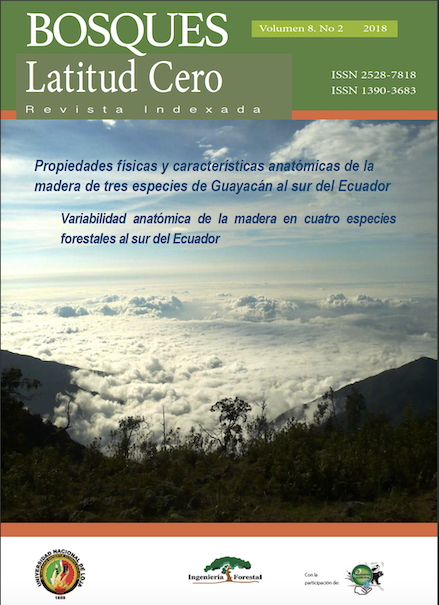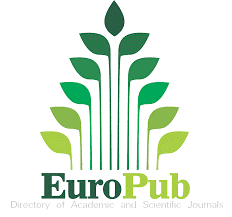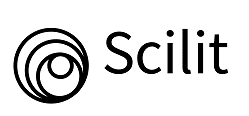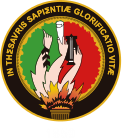Evaluación de la calidad de los suelos de sistemas frutícolas de la Zona Central de Chile
Resumen
La zona central de Chile tiene el mayor porcentaje de árboles frutales por área plantada. Estos sistemas agrícolas han provocado un cambio en su fertilidad natural, productividad y propiedades; concomitantemente, pérdida de su calidad. Para encontrar e identificar prácticas de manejo adecuadas para cultivos frutales, el método de evaluación relacionado con la calidad del suelo tiene la mayor influencia. El objetivo principal de este estudio fue generar índices de calidad del suelo (ICS) para sistemas frutales en la Zona Central de Chile, basados en propiedades físicas, químicas y biológicas del suelo de las Regiones IV y VI. Con estas propiedades, a través de un análisis factorial, los indicadores se seleccionaron y normalizaron en un ICS a través de funciones lineales y no lineales. Los resultados generales muestran que los indicadores con el peso final más alto en la IV Región fueron conductividad eléctrica, carbono orgánico, N total, Na intercambiable, S disponible, arcilla y arena. Mientras que los indicadores en la VI Región fueron CIC, arcilla, K disponible, Ca y Mg intercambiables. Con respecto a la calidad del suelo, las Regiones IV y VI mostraron un SQI de 0,15 y 0,17, respectivamente. Estos valores no mostraron diferencias significativas (p = 0,2613).Citas
Andrews, S., D. Karlen, and C. Cambardella. 2004. “The Soil Management Assessment Framework : A Quantitative Soil Quality Evaluation Method.” Sci. Soc. Am. J. 68: 1945–62.
Andrews, S, D L Karlen, and J P Mitchell. 2002. “A Comparison of Soil Quality Indexing Methods for Vegetable Production Systems in Northern California.” Agric. Ecosyst. Environ. 90 (1): 25–45. doi:Pii S0167-8809(01)00174-8rDoi 10.1016/S0167-8809(01)00174-8.
Andrews, Susan S, and C Ronald Carroll. 2001. “Designing a Soil Quality Assessment Tool for Sustainable Agroecosystem Management.” Ecological Applications 11 (6): 1573–85. doi:10.1890/1051-0761(2001)011[1573:DASQAT]2.0.CO;2.
Armenise, E., M. A. Redmile-Gordon, A. M. Stellacci, A. Ciccarese, and P. Rubino. 2013. “Developing a Soil Quality Index to Compare Soil Fitness for Agricultural Use under Different Managements in the Mediterranean Environment.” Soil and Tillage Research 130. Elsevier B.V.: 91–98. doi:10.1016/j.still.2013.02.013.
Arriaga, F, J Guzman, and B Lowery. 2017. “Conventional Agricultural Production Systems and Soil Functions.” In Soil Health and Intensification of Agroecosystems, 127–28.
Ascar, Loreto, Inés Ahumada, and Pablo Richter. 2008. “Effect of Biosolid Incorporation on Arsenic Distribution in Mollisol Soils in Central Chile.” Chemosphere 70 (7): 1211–17. doi:10.1016/j.chemosphere.2007.08.012.
Bastida, F, José Moreno, T Hernández, and C García. 2006. “Microbiological Degradation Index of Soils in a Semiarid Climate.” Soil Biology and Biochemistry 38 (12): 3463–73. doi:10.1016/j.soilbio.2006.06.001.
Buja, A., and N. Eyuboglu. 1992. “Multivariate Behavioral Remarks on Parallel Analysis Remarks on Parallel Analysis.” Multivariate Behavioral Research 27: 37–41.
Casanova, M., O. Salazar, O. Seguel, and W. Luzio. 2013. The Soils of Chile. Edited by Prof. Alfred E. Hartemink. Santiago, Chile.
Ceccarelli, S, S Grando, and M Baum. 2007. “Participatory Plant Breeding in Water-Limited Environments.” Experimental Agriculture 43 (04): 411–35. doi:10.1017/S0014479707005327.
Cerny, Barbara A, and Henry F Kaiser. 1977. “A Study Of A Measure Of Sampling Adequacy For Factor- Analytic Correlation Matrices.” Multivariate Behavioral Research 12. doi:10.1207/s15327906mbr1201.
Comisión Nacional del Medio Ambiente. 2008. Biodiversidad de Chile, Patrimonio y Desafíos. Mma. Segunda Ed. Santiago. doi:10.1007/s13398-014-0173-7.2.
CONAMA. 2009. “Convenio Sobre Diversidad Biológica: Cuarto Informe Nacional de Biodiversidad Chile.” Santiago.
CONICYT. 2008. “El Sector Frutícola En Chile. Capacidades de Investigación y Áreas de Desarrollo Científico-Tecnológico.” Santiago.
Corral, Sebastián A., Valeria de Angel, Natalia Salas, Liliana Zúñiga-Venegas, Pablo A. Gaspar, and Floria Pancetti. 2017. “Cognitive Impairment in Agricultural Workers and Nearby Residents Exposed to Pesticides in the Coquimbo Region of Chile.” Neurotoxicology and Teratology 62. Elsevier Inc: 13–19. doi:10.1016/j.ntt.2017.05.003.
De Gregori, Ida, Edward Fuentes, Mariela Rojas, Hugo Pinochet, and Martine Potin-Gautier. 2003. “Monitoring of Copper, Arsenic and Antimony Evels in Agricultural Soils Imacted and Non-Impacted by Mining Activities, from Three Regions in Chile.” Journal of Environmental Monitoring.
Echeverría, Rodrigo, Víctor Moreira, and José Barrena. 2012. “A Characterization of Chilean Farmers Based on Their Market- Production Orientation.” Ciencia e Investigación Agraría 39 (2): 255–64.
Flores, J, C López, and J Rojas. 2012. “Estado Actual de Los Suelos de La Región de Coquimbo Uso y Degradación.”
Hernández, Ángela, Eduardo C. Arellano, David Morales-Moraga, and Marcelo D. Miranda. 2016. “Understanding the Effect of Three Decades of Land Use Change on Soil Quality and Biomass Productivity in a Mediterranean Landscape in Chile.” Catena 140. Elsevier B.V.: 195–204. doi:10.1016/j.catena.2016.01.029.
Kaiser, Henry F. 1974. “An Index of Factorial Simplicity.” Phychometrica 39 (1): 31–36.
Kladivko, E J. 2001. “Tillage Systems and Soil Ecology.” Agricultural Systems 61: 61–76.
Kucharik, Christopher J, Kristofor R Brye, John M Norman, A Jonathan, Stith T Gower, Larry G Bundy, Christopher J Kucharik, et al. 2001. “Carbon and Nitrogen Cycling in Agroecosystems of Southern Wisconsin : Potential for SOC Measurements and Modeling of Sequestration during the Next 50 Years.” Ecosystems 4 (3): 237–58. doi:10.1007/s10021-001-0007-2.
L. López y G. Anríquez. 2003. “Environmental Externalities of Agriculture: Chile 1980-2000.” Roma, Italia.
Larson, W E, and F J Pierce. 1994. “The Dynamics of Soil Quality as a Measure of Sustainable Management.” Defining Soil Quality for Sustainable Environment 551 (1): 37–52. doi:10.2136/sssaspecpub35.c1.
Liu, Zhanjun, Wei Zhou, Jianbo Shen, Shutian Li, Ping He, and Guoqing Liang. 2014. “Soil Quality Assessment of Albic Soils with Different Productivities for Eastern China.” Soil and Tillage Research 140. Elsevier B.V.: 74–81. doi:10.1016/j.still.2014.02.010.
Martínez, Eduardo, Juan Pablo Fuentes, Vanessa Pino, Paola Silva, and Edmundo Acevedo. 2013. “Chemical and Biological Properties as Affected by No-Tillage and Conventional Tillage Systems in an Irrigated Haploxeroll of Central Chile.” Soil and Tillage Research 126: 238–45. doi:10.1016/j.still.2012.07.014.
Marzaioli, R., R. D’Ascoli, R. A. De Pascale, and F. A. Rutigliano. 2010. “Soil Quality in a Mediterranean Area of Southern Italy as Related to Different Land Use Types.” Applied Soil Ecology 44 (3): 205–12. doi:10.1016/j.apsoil.2009.12.007.
Morales, C., J. Acevedo, Z. Aranibar, and G. Dascal. 2016. “Chile: Los Costos de La Inacción Ante La Desertificación y Degradación de Las Tierras.” Santiago, Chile.
Muñoz, C., E. Zagal, and C. Ovalle. 2007. “Influence of Trees on Soil Organic Matter in Mediterranean Agroforestry Systems: An Example from the ‘Espinal’ of Central Chile.” European Journal of Soil Science 58 (3): 728–35. doi:10.1111/j.1365-2389.2006.00858.x.
Raiesi, F, and V Kabiri. 2016. “Identification of Soil Quality Indicators for Assessing the Effect of Different Tillage Practices through a Soil Quality Index in a Semi-Arid Environment.” Ecological Indicators 71. Elsevier Ltd: 198–207. doi:10.1016/j.ecolind.2016.06.061.
Ruiz, R, and A Sadzawka. 1986. “Fijación de Potasio En Suelos Del Valle de Aconcagua.” Agricultura Técnica (Chile) 46: 503–5.
Shukla, M, R Lal, and M Ebinger. 2006. “Determining Soil Quality Indicators by Factor Analysis.” Soil & Tillage Research 87: 194–204. doi:10.1016/j.still.2005.03.011.
Singh, A. K., L. J. Bordoloi, Manoj Kumar, S. Hazarika, and Brajendra Parmar. 2014. “Land Use Impact on Soil Quality in Eastern Himalayan Region of India.” Environmental Monitoring and Assessment 186 (4): 2013–24. doi:10.1007/s10661-013-3514-7.
Smith, Jeffrey L., Jonathan J. Halvorson, and Robert I. Papendick. 1993. “Using Multiple-Variable Indicator Kriging for Evaluating Soil Quality.” Soil Science Society of America Journal 57 (3): 743. doi:10.2136/sssaj1993.03615995005700030020x.
Tabachnick, Barbara G, and Linda S Fidell. 2007. Using Multivariate Statistics. Fifth edit. Boston.
Toro-Mujica, Paula, Claudio Aguilar, Ra??l Vera, Jos?? Rivas, and Ant??n Garc??a. 2015. “Sheep Production Systems in the Semi-Arid Zone: Changes and Simulated Bio-Economic Performances in a Case Study in Central Chile.” Livestock Science 180. Elsevier: 209–19. doi:10.1016/j.livsci.2015.07.001.
Uribe, Hamil, David E Rupp, Jose Arumi-, Ryan D Stewart, and John S Selker. 2014. “Assessment of Current and Potential Yield of Hand-Dug Wells in a Semi-Arid Zone in South-Central Chile Using an Analytical Methodology.” Chilean Journal of Agricultural Research 74 (June): 219–24. doi:10.4067/S0718-58392014000200014.
Weissenberger, Jean. 2015. “Organic Production and the European Union.” Vol. 989. doi:10.2861/488634.
Zhang, Chao, Sha Xue, Guo Bin Liu, and Zi Lin Song. 2011. “A Comparison of Soil Qualities of Different Revegetation Types in the Loess Plateau, China.” Plant and Soil 347 (1): 163–78. doi:10.1007/s11104-011-0836-5.
Descargas
Publicado
Cómo citar
Número
Sección
Licencia
Derechos de autor 2018 Bosques Latitud Cero

Esta obra está bajo una licencia internacional Creative Commons Atribución-NoComercial-CompartirIgual 4.0.
Esta obra se publica bajo la licencia Creative Commons Atribución-NoComercial-CompartirIgual 4.0 Internacional (CC BY-NC-SA 4.0). Esto significa que los usuarios pueden copiar, distribuir y adaptar el contenido, siempre que se otorgue el crédito adecuado a los autores y a la revista. No se permite el uso comercial del material. Además, cualquier obra derivada debe distribuirse bajo la misma licencia. Esta licencia garantiza el acceso abierto al conocimiento, promoviendo la difusión y reutilización de los trabajos publicados sin fines de lucro, respetando la autoría y asegurando la libre circulación del contenido en términos equitativos.






























